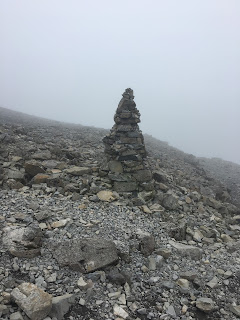Combining exploring with treasure hunting, geocaching is a great way for families to #GetOutside.
Many of us have fond memories of exciting treasure hunts as children, with Easter eggs and other small treats often the subjects of our searches. These days, though, it's much more normal to find youngsters glued to their television screens, completing quests of a more virtual nature. Technology has certainly affected the ways in which people explore the world and enjoy themselves, but it'd be wrong to assume that old and new can't be combined to great effect. Geocaching is a fantastic example of this.
What is geocaching?
Geocaching can be described in simple terms as treasure hunting for the digital generation. Instead of using the conventional compasses and printed maps more commonly associated with orienteering, participants rely on global positioning system (GPS) technology to find their way to certain points around the globe. These spots are found using coordinates published online by other forum members who have hidden boxes or containers (caches) there.
These boxes - often airtight Tupperware-style containers - can contain pretty much anything. In their most basic form, they'll usually have a log book for hunters to record their names and the dates on which they find the stash. Much of the excitement, however, lies in seeing what other trinkets and souvenirs have been left. If the finder decides to take anything away, they're required to leave something of equal or greater value for the next person to discover - and the chain begins!
How did it all start?
The activity got its big break at the turn of the century when the US government decided to put an end to Selected Availability (SA). This measure was originally put in place to limit public GPS signals, as officials were concerned about the security implications the technology may bring. However, in May 2000, then-president Bill Clinton decided that GPS could be made more useful to people and organisations across the globe if the restrictions were lifted.
Once the button was pressed and the satellites were able to process their new instructions, the accuracy of GPS technology improved massively. In order to celebrate and test the new capabilities, Dave Ulmer, an IT expert from Oregon, decided to hide a box of prizes in some local woodland before posting the coordinates on the internet. Within three days, two people had already set off to find the items after reading Dave's post. The stash comprised videos, computer software and books. They shared their own experiences to others on the web and the excitement and enthusiasm snowballed from there.
The original founder had called his idea the 'Great American GPS Stash Hunt', although this was shortened to 'geostashing' and eventually changed to 'geocaching'; this was because many people felt the word 'stash' had negative connotations.
How popular is it?
While geocaching's birthplace is undoubtedly the US, tens of thousands of Brits now describe themselves as enthusiasts. Its popularity is growing across the world; for a bit of perspective, the official website registered its 2,000,000th find early in 2013.
Geocaching's rise to fame can be put down to a number of factors. To begin with, it requires a certain level of skill from those who take part, which means it tends to offer a real sense of achievement and fulfilment. Add to this some healthy doses of excitement and adventure and it's easy to see why so many families quickly get addicted. While children should only go caching with a responsible adult, it's easy for people of all ages and levels of experience to get involved.
What are the benefits?
One of geocaching's biggest selling points lies in its community. The very nature of the activity requires people to work together to get their rewards, both online and on actual hunts. The geocaching isn't quite over when the items are found - it's then time for the successful hunters to share their experiences online, urging others to get involved while they're at it.
There's little doubt that geocaching promotes physical activity and gets people outside; the extent to which this is true depends largely on the caches chosen and the ways in which they're found. It's become particularly popular with those who don't quite take to conventional sports - especially schoolchildren.
It'd be wrong to ignore the educational benefits on offer too. Over the last few years, an increasing number of official representatives have been popping up at education conventions and expos across the UK. Teachers are beginning to see geocaching as a powerful tool involving practical learning, critical thinking and active engagement - all of which are crucial ingredients in the development of young minds.
So how do I get started?
Equipment-wise, the only crucial component is a GPS-enabled device. In the past this would have meant buying a handheld navigation device (the kind commonly used by hikers, cyclists and general adventurers). Now, however, most smartphones come with the necessary technology and there are plenty of dedicated applications to download for both Android and iOS handsets.
The next step will be to register with an online community. The largest and most established is geocaching.com, which was set up just six months after the first hunt was staged. A number of specialist sites have also been started since, like handicaching.com, which caters specifically for disabled people. Terracaching.com was put together to appeal to more experienced geocachers who may be looking for more difficult or large-scale tasks.
Depending on how serious you want to get and the caches you set out to find, it may be worth purchasing some comfortable walking shoes and durable clothing; other than that, you'll probably already have everything you need to get going with your own geocaching journey - so let the fun begin!



















